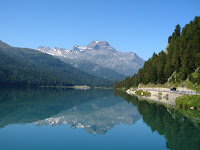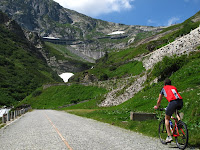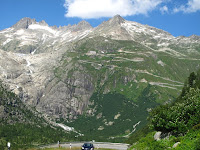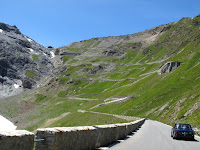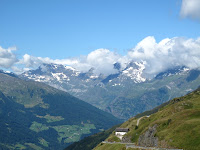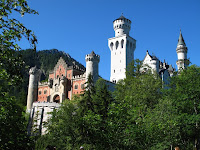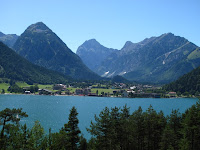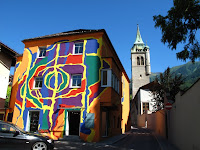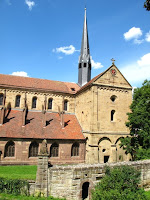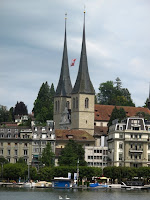
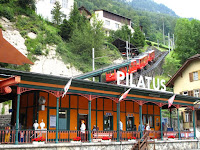
After two days of solid mountains passes, Thursday was scheduled as a rest day. We took advantage of this to leave the MG at the hotel, and joined others in the party on a circular tour, taking in the best of the area. The first leg of out tour was a boat service to Lucerne. It made many scheduled stops at tiny villages around the lake, and almost two hours later, arrived in Lucerne.

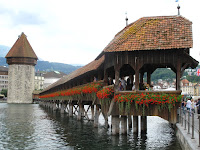
The main feature of Lucerne is their two old bridges, the most attractive being the 14th century Chapel Bridge. After admiring these, and having a delicious lunch, we climbed the wall fortifications and two towers in the walls.
 Time for stage two of the tour, the local bus to the cable car terminus. From here, there are three stages of cable car. After stage two, most of the group choose to take a diversion, and go tobogganing down the mountain side. The toboggans run in a chute, and at the bottom, the driver, plus toboggan, are towed backwards to the top.
Time for stage two of the tour, the local bus to the cable car terminus. From here, there are three stages of cable car. After stage two, most of the group choose to take a diversion, and go tobogganing down the mountain side. The toboggans run in a chute, and at the bottom, the driver, plus toboggan, are towed backwards to the top. The final cable car ride, took us to the top of the mountain, but unlike the previous two days, we were in the cloud, and unable to see the apparantly marvellous views. But the best was yet to come, from the top we decended in the steepest cog railway in the world. It is an amazing 35 minute ride, with gradients that get to 48%, and a brilliant way to end the fun day.
The final cable car ride, took us to the top of the mountain, but unlike the previous two days, we were in the cloud, and unable to see the apparantly marvellous views. But the best was yet to come, from the top we decended in the steepest cog railway in the world. It is an amazing 35 minute ride, with gradients that get to 48%, and a brilliant way to end the fun day.
